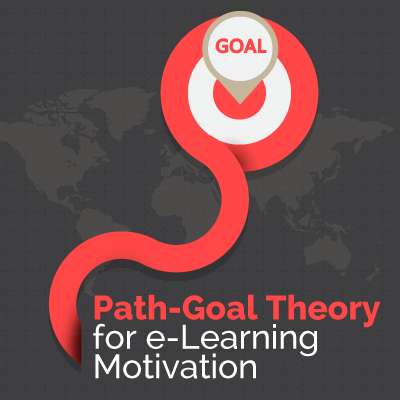Performance Goals in eLearning
The secret to success for any eLearning deliverable is knowing what you want to achieve beforehand. Do you want to boost customer satisfaction ratings by equipping your learners with the right skill sets? Do you want to help your learners to master a specific task? The most effective way to get the desired outcome is to set performance goals that will serve as a guide throughout the entire design and development process.
Why Performance Goals add Value to eLearning Courses
Defining performance goals before you even begin the development process allows you to design eLearning activities, content, and assessments that are centered around enhancing learner performance. Doing so, performance goals add value to your eLearning deliverables because they serve as a guide that enables you to integrate specific skill building tools and information into your eLearning deliverables.
On the other hand, an eLearning deliverable that hasn't successfully incorporated performance goals will not provide the learner with ample opportunity to practice the newly learned behaviors or link the content with real life scenarios. As a consequence, the learners simply won't be able to see its value and they won't become active participants in the online training process. This may lead to an eLearning deliverable which is wholly ineffective, making it a total misuse of the organization's resources, both in terms of time and money.
How To Develop And Use Performance Goals in eLearning
When you are trying to develop and utilize performance goals, there are a few things that you may want to bear in mind:
- Develop performance goals that can be measured or observed.
One of the key differences between learning goals and performance goals is that performance-based goals are designed to achieve measurable results. Ask yourself: after the learners complete the online training event, will they be able to perform the newly acquired skills effectively? For example, will the company's customer satisfaction rates be enhanced thanks to the newly acquired skills? Therefore, when you're developing your performance goals, you will want to clearly define the desired outcomes and how these can be assessed, observed, or measured. It's also essential to integrate exercises that give learners the chance to explore their weaknesses and improve upon them through newly learned behaviors. - Understand your eLearning course audience.
Before you define your performance goal(s), you must analyze your core audience. First of all, you need to consider their current knowledge base and experience level. Then, you will have to wonder: what are they hoping to achieve by taking the eLearning course or attending the online training event? What are their skill sets today, and which skill sets do they need to develop? What are the organization's expectations from the eLearning course? How will the results of the eLearning course be measured (i.e. on the job performance or manager reviews)? In order to answer each of these questions you'll probably have to carry out in depth research into your current practices and procedures, so that you can identify the functions or procedures that you'll need to focus on during the design and development process. - Always show how acquired knowledge converts to real-life action.
The key to creating and using performance goals is to show learners how they can apply what they have just learned in the real world. For example, will they be able to carry out a sales task after finishing an online training module? Will they have the ability to boost their sales numbers? Overall, are learners going to be equipped with the knowledge they need to become better at what they do on a daily basis? When formulating your performance goals, always include an action word, such as “apply” or “achieve” and be precise about what your eLearning course will offer them, so that learners will have a clear idea of what they will be able to do once they complete it.
How To Link Performance Goals Into Your eLearning Course.
Performance goals should always be mentioned in the description of the eLearning course or online training event, and listed in the syllabus. In order to link these performance goals into your eLearning course, you can create activities and assignments that mimic real life processes or focus on practical applications of a specific skill. Often these activities may come in the form of collaborative scenarios with peers or discussions with more experienced colleagues. Assessments are also an invaluable tool, because they give you the power to evaluate whether the learner is actually acquiring information or developing skill sets that are part of your performance goals. If you find, through an assessment, that the learners simply aren’t progressing as they should, then you can intervene to help them get the most out of the experience moving forward.
In addition, learners should be aware of how the performance goals will enable them to earn more, advance up the corporate ladder, or develop their professional knowledge. You can do this by offering constructive eLearning feedback that ties performance goals to real world consequences or rewards. In many instances, the improvement in overall performance should speak for itself, given that the learners will be able to show off their newly learned behaviors and skill sets if performance goals have been successfully utilized.
To conclude, knowing how to develop clear performance goals is equally as important as knowing how to put those goals into action when designing your eLearning deliverable. By using these eLearning performance goal tips and techniques, you can make your Learning and Development strategy effective, productive, and cost efficient.
If you'd like to learn more about performance support tools that can help learners reach their goals and effective apply the skills they have learned, the article Performance Support: More Than Just Training features tips on how to choose the right tool for your training needs.
Are you wondering how to use the 5 "Moments of Need" model In corporate eLearning? Read the article The 5 “Moments of Need” in Corporate eLearning and How to Address Them to find out more!








